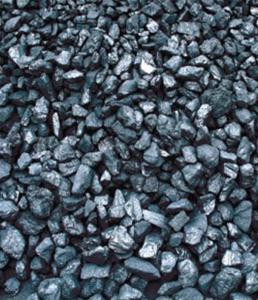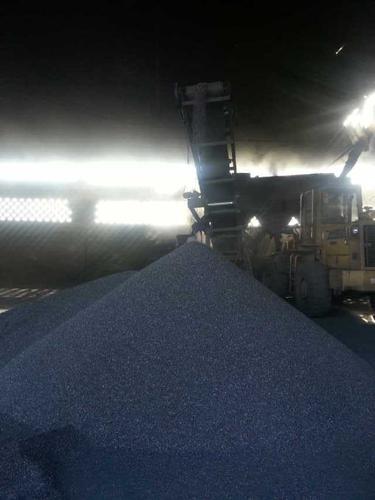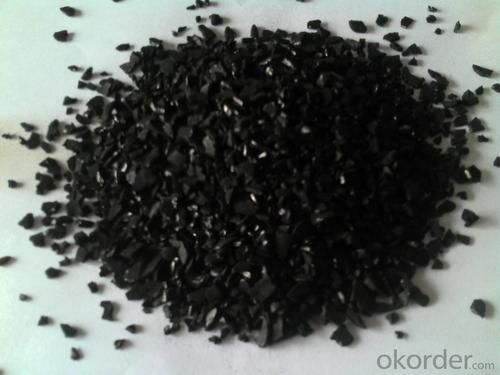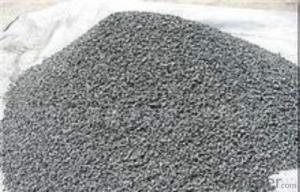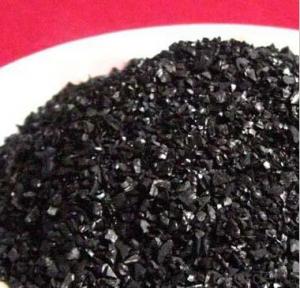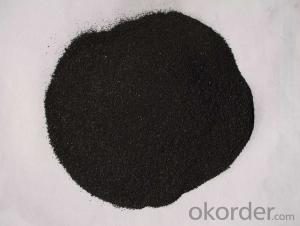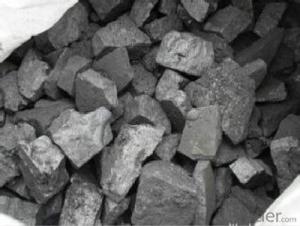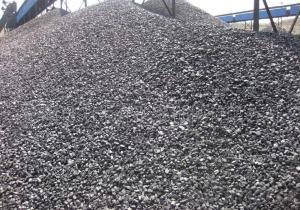Calcined Anthracite/Carbon Additive for Iron Casting &Steelmaking
- Loading Port:
- Tianjin
- Payment Terms:
- TT OR LC
- Min Order Qty:
- 1 m.t.
- Supply Capability:
- 10000000 m.t./month
OKorder Service Pledge
OKorder Financial Service
You Might Also Like
1.Structure of Calcined Anthracite Description
This product is made from high-quality anthracite as raw materials, shape of columnar respectively, particles, powder, such as spherical shape, has high strength, adsorption speed, adsorption capacity, high specific surface area is larger, developed pore structure, pore size is between coconut shell activated carbon and wood charcoal.
Mainly used for high-end air purification, waste gas treatment, waste incineration, high pure water treatment, wastewater treatment, wastewater treatment, aquatic animals, desulphurization and denitration, and can effectively remove the impurities and contaminants in the gas and liquid as well as a variety of gas separation and purification, also can be widely used in all kinds of low boiling point substances adsorption recycling, deodorization oil removal, etc.
2.Main Features of the Calcined Anthracite
Calcined Anthracite is a kind of filter used in water treatment. It is suitable for the treatment of common acid, the middle degree alkali. This product has large surface area, and its various indexes all exceed the Construction Department’s standard. Anthracite filter is especially selected from the deep well minerals, so it includes the highest percentage of carbo. It must have been filtered and washed to make sure it can be used for water filting. Since it has better granular maintaining ability, so it can improve the floating granular’s cleaning ability.
3. Calcined Anthracite Images
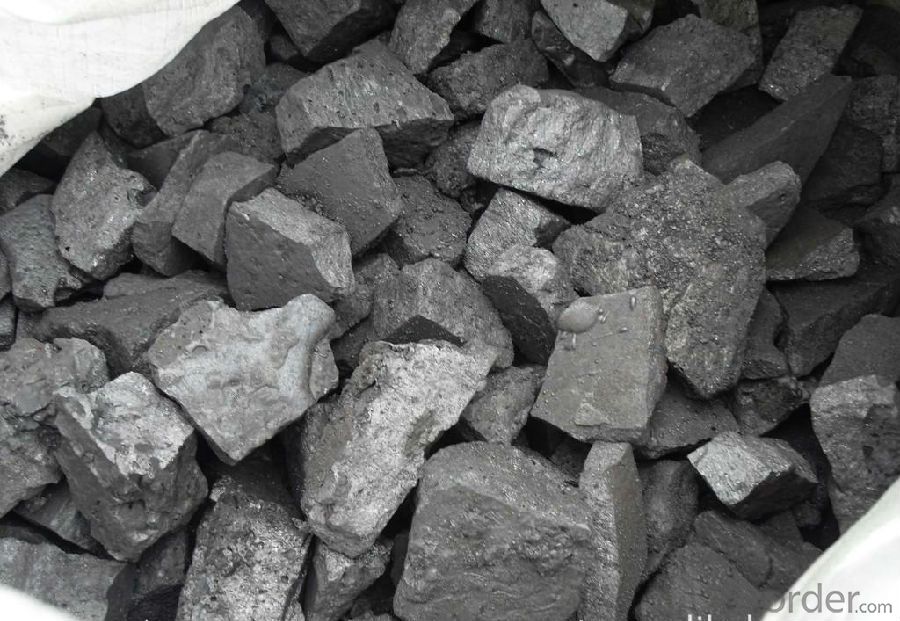
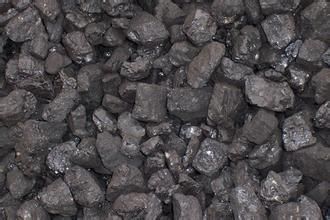
4. Calcined Anthracite Specification
| Place of Origin: | Shandong, China (Mainland) | Brand Name: | CNBM | Model Number: | FSKC001 |
| Application: | Carrier Of Chemical Activator, Casting and Steel-smelting | Shape: | Carbon Blocks | Product Type: | Carbon Additive |
| C Content (%): | 95%-99% | Working Temperature: | 1500℃ | S Content (%): | 0.4% MAX |
| N Content (%): | 0.6% MAX | Ash Content (%): | 4%-9% | Volatile: | 0.5%-2% |
5.FAQ of Calcined Anthracite
1). Q: Are you a factory or trading company?
A: We are a factory.
2). Q: Where is your factory located? How can I visit there?
A: Our factory is located in ShanXi, HeNan, China. You are warmly welcomed to visit us!
3). Q: How can I get some samples?
A: Please connect me for samples
4). Q: Can the price be cheaper?
A: Of course, you will be offered a good discount for big amount.
- Q: What is carbon offsetting in aviation?
- Carbon offsetting in aviation refers to the practice of compensating for the greenhouse gas emissions produced by aircraft by investing in projects that reduce or remove an equivalent amount of carbon dioxide from the atmosphere. This voluntary measure aims to mitigate the environmental impact of air travel by supporting initiatives such as renewable energy projects or reforestation efforts.
- Q: What are the impacts of carbon emissions on glacier retreat?
- Glacier retreat is significantly affected by carbon emissions. Human activities, such as burning fossil fuels and deforestation, release carbon dioxide and other greenhouse gases into the atmosphere, contributing to global warming. This rise in global temperatures directly affects glaciers. Glaciers are massive ice bodies that form over long periods from accumulated snowfall. They serve as natural freshwater reservoirs, providing an essential source of drinking water to millions of people worldwide. However, as carbon emissions cause the Earth's temperature to increase, glaciers melt at a faster rate. The warming climate causes glaciers to lose more ice through melting than they gain through snowfall. This results in a net ice loss, leading to glacier retreat. As glaciers retreat, they not only decrease in size but also become thinner. This reduces their water storage capacity, impacting water availability in regions that rely on glacial meltwater for drinking, irrigation, and hydropower. Moreover, glacier retreat has extensive implications for ecosystems and biodiversity. Glaciers offer unique habitats for various species, including plants, animals, and microorganisms that have adapted to survive in extreme environments. As glaciers vanish, these species must adapt or relocate to other areas, disrupting ecosystem equilibrium. The consequences of glacier retreat extend beyond local and regional scales. Glacial meltwater contributes to rivers and lakes, ensuring a consistent water flow throughout the year. As glaciers shrink, this flow diminishes, leading to water scarcity during dry periods. This poses a threat to agriculture, urban water supplies, and the overall sustainability of ecosystems reliant on stable water sources. Additionally, glacier loss contributes to rising sea levels. When glaciers melt, the water they release flows into the oceans, causing them to expand. This worsens coastal erosion, increases the risk of flooding in low-lying areas, and endangers coastal communities and infrastructure. In conclusion, carbon emissions profoundly impact glacier retreat. The resulting global warming accelerates glacier melting, leading to water scarcity, loss of biodiversity, rising sea levels, and various environmental and socio-economic consequences. It is crucial to address carbon emissions and take action to mitigate climate change in order to preserve these crucial ice formations and the ecosystems and communities that depend on them.
- Q: How do fossil fuels release carbon into the atmosphere?
- Fossil fuels release carbon into the atmosphere through the process of combustion. When fossil fuels like coal, oil, and natural gas are burned for energy production, carbon dioxide (CO2) is released as a byproduct. This CO2 is a greenhouse gas that traps heat in the Earth's atmosphere, contributing to global warming and climate change.
- Q: What are the potential uses of carbon nanomaterials in medicine?
- Carbon nanomaterials have shown great promise in the field of medicine due to their unique properties. One potential use of carbon nanomaterials is in drug delivery systems. Their high surface area-to-volume ratio allows for efficient loading and release of therapeutic agents, enabling targeted and controlled drug delivery. This could lead to more effective treatments with reduced side effects. Another potential use is in medical imaging. Carbon nanomaterials, such as carbon nanotubes and graphene, have excellent optical and electrical properties that can enhance imaging techniques like MRI and CT scans. This could improve the accuracy and resolution of medical imaging, enabling better diagnosis and monitoring of diseases. Carbon nanomaterials also have antibacterial properties which can be utilized in wound healing and infection control. Nanostructured carbon materials can effectively kill bacteria and prevent the formation of biofilms, which are often resistant to conventional antibiotics. This could potentially revolutionize the treatment of infections, especially those caused by antibiotic-resistant bacteria. Furthermore, carbon nanomaterials have the potential to be used in tissue engineering and regenerative medicine. Their biocompatibility, mechanical strength, and electrical conductivity make them suitable for creating scaffolds to support tissue growth and promote regeneration. Carbon nanomaterials could also be used to enhance the electrical stimulation of tissues, aiding in nerve regeneration and improving the functionality of artificial organs. In addition to these applications, carbon nanomaterials have been explored for their ability to detect and monitor diseases at an early stage. Their unique electronic and optical properties can be utilized in biosensors and diagnostic devices, allowing for sensitive and specific detection of biomarkers associated with various diseases. While the potential uses of carbon nanomaterials in medicine are vast, it is important to note that further research and development are required to ensure their safety, efficacy, and long-term effects. Regulatory considerations and ethical concerns surrounding the use of nanomaterials in medicine also need to be addressed. Nonetheless, the promising capabilities of carbon nanomaterials offer hope for more advanced and personalized medical treatments in the future.
- Q: How do you use carbon fourteen to measure the age?
- One is obvious a small amount of sample, only 1 ~ 5 mg samples can be, such as a piece of fabric, bone chips, toner trace of ancient ceramics in the surface or pores can be measured; while the conventional carbon - 14 dating rules 1 to 5 grams of samples differ by 3 orders of magnitude. The two is high sensitivity. The sensitivity of 10-15 to 10-16 isotope ratio measurement; while the conventional carbon - 14 dating rules with a difference of 5 to 7 orders of magnitude. Three is a short measurement time, measurement of modern carbon to reach 1% accuracy, only 10 to 20 minutes; while the conventional carbon - 14 dating is 12 ~ 20 hours. It is due to carbon - 14 accelerator mass spectrometry dating method has the advantage, since its inception, has been paid attention to by archaeologists, paleontologists and geologists, and is widely used. It can be said that within 50000 years of cultural relics on the determination of samples, carbon - 14 accelerator mass spectrometry dating method is determined the accuracy of a maximum of 1. carbon. 14 is a radioactive isotope of carbon, was found in 1940. It is produced by cosmic rays collide with a nitrogen atom in the air, which has a half-life of about 5730 years, as the decay of beta decay, 14 atoms into carbon nitrogen atoms.
- Q: Advantages of carbon fiber
- Carbon fiber has excellent properties of elemental carbon, such as small proportion, excellent heat resistance, small thermal expansion coefficient, high thermal conductivity, good corrosion resistance and good conductivity. At the same time, it has a kind of fiber like flexibility, which can be woven and wrapped. The best performance of carbon fiber is that the specific strength and specific modulus are more than that of general reinforcement fiber.
- Q: What is the impact of carbon emissions on agriculture?
- Carbon emissions have a significant impact on agriculture, affecting both crop production and livestock farming. One of the primary consequences of increased carbon emissions is climate change, which alters weather patterns and temperatures. These changes can disrupt the delicate balance required for successful agriculture. Rising temperatures caused by carbon emissions lead to increased evaporation, which can reduce soil moisture and hinder crop growth. Droughts become more frequent and severe, leading to water scarcity and decreased crop yields. Furthermore, extreme weather events such as floods, storms, and hurricanes become more frequent, causing extensive damage to crops and farmland. Another consequence of carbon emissions is the alteration of atmospheric composition. High levels of carbon dioxide (CO2) stimulate the growth of certain weeds and invasive species, which compete with crops for resources such as sunlight, water, and nutrients. This competition can lead to reduced crop yields and lower quality produce. Additionally, carbon emissions contribute to air pollution, including ozone formation. High levels of ozone can damage plant tissues and reduce photosynthesis, limiting crop productivity. Ozone also negatively affects the health of livestock, reducing their growth rates and milk production. The impact of carbon emissions on agriculture is not limited to crop production. Livestock farming is also affected, as changes in climate and temperature can impact animal health and productivity. Heat stress becomes a significant issue, leading to reduced fertility, lower milk yields, and increased susceptibility to diseases. Livestock also need access to adequate water and nutritious feed, which can become scarce due to droughts and increased competition for resources. Overall, carbon emissions have a detrimental impact on agriculture, affecting both crop production and livestock farming. Climate change, altered weather patterns, and increased competition for resources all contribute to reduced yields, lower quality produce, and decreased livestock productivity. Addressing and mitigating carbon emissions is crucial to ensure the sustainability and resilience of the agricultural sector in the face of these challenges.
- Q: Is the hardness or softness of the steel with higher carbon content?
- Carbon is the major element in determining the properties of steel, because changes in carbon content lead directly to changes in crystal structure.
- Q: What's the difference between an alkaline cell and a carbon cell?
- 3. Alkaline batteries, also called alkaline dry cells, are suitable for large capacity and long time use. The internal resistance of the battery is low, so the current produced is larger than that of the general zinc manganese battery, while the environmental protection type mercury content is only 0.025%, and no recycling is needed. Based on his environmental protection, and the current characteristics of large, so now alkaline battery more.4. In the final analysis, the essential difference between a carbon cell and an alkaline cell is the internal material. In short, carbon battery consists of carbon, zinc skin composition, but its internal cadmium and mercury, is not conducive to environmental protection, but it is cheap, so there is a space for one person in the market, and the alkaline battery no pollution of heavy metal ions, high current, conducive to environmental protection, is the future development direction of the battery!
- Q: How does carbon dioxide affect the health of marine organisms?
- The health of marine organisms can be significantly impacted by carbon dioxide. Seawater absorbs carbon dioxide, causing a chemical reaction that results in increased acidity, known as ocean acidification. Ocean acidification hampers the ability of numerous marine organisms to construct and maintain their shells and skeletons. Organisms like corals, oysters, and shellfish rely on calcium carbonate to form their protective structures. However, in more acidic conditions, the availability of carbonate ions decreases, making it more difficult for these organisms to calcify. This can result in weakened shells, reduced growth rates, and heightened susceptibility to predation and disease. Moreover, ocean acidification can disturb the reproductive and developmental processes of marine organisms. Higher levels of CO2 have been shown in some studies to affect fish's ability to locate preferred habitats, find mates, and successfully reproduce. Additionally, certain species of fish and invertebrates demonstrate altered behavior and impaired sensory functions under high CO2 conditions. In addition to the direct effects, ocean acidification can also indirectly impact marine organisms by disrupting entire ecosystems. For example, the decline of coral reefs due to reduced calcification can have far-reaching effects on the entire reef ecosystem, affecting the biodiversity and productivity of these crucial marine habitats. In summary, the rising levels of atmospheric carbon dioxide not only contribute to global climate change but also lead to ocean acidification, posing significant threats to the health and survival of many marine organisms. It is imperative to address and mitigate the causes of carbon dioxide emissions to safeguard the delicate balance of our oceans and the diverse range of species that rely on them for survival.
Send your message to us
Calcined Anthracite/Carbon Additive for Iron Casting &Steelmaking
- Loading Port:
- Tianjin
- Payment Terms:
- TT OR LC
- Min Order Qty:
- 1 m.t.
- Supply Capability:
- 10000000 m.t./month
OKorder Service Pledge
OKorder Financial Service
Similar products
Hot products
Hot Searches
Related keywords
